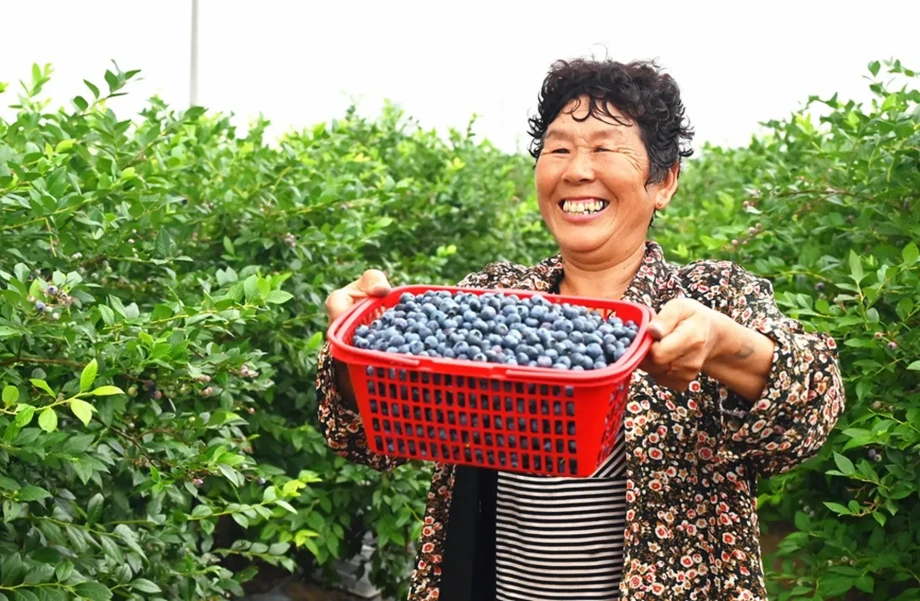The berries category is rapidly expanding in terms of both consumer demand and production levels, particularly in mainland China. This steady growth has been a key factor in the global sector's boom over the past decade, and its continued development could pave the way for new varieties bred to withstand various Asian climates and cater to Asian consumer taste profiles.
These were some of the main points discussed during an Asiafruit Congress roundtable, focused on the berry boom in Asia, held at Asia Fruit Logistica in September.
Experts' Comments on the Sector's Growth
"We've been on this path for a decade now," said Henk Vaandrager, general manager of blueberry breeder Fall Creek China. "Especially in the past three or four years, we’ve seen many competitors imitate our way of producing berries, which I think is an indicator of confidence in the category: people don’t just invest in things they don’t believe in."
Despite increased competition, Vaandrager still sees significant growth potential for China and the Asian market in general. "We still think there are huge growth opportunities in blueberries and other berries like raspberries or blackberries, where the market is not yet developed," he stated.

Focus on Blueberries and Expansion Opportunities
Michael Oates, general manager of berry producer and cultivation systems supplier Haygrove China, commented that blueberries almost deserve a category of their own due to their different rates of growth in China. "Total blueberry consumption in China is likely 25-30 times higher than raspberries," he said. "The Rubus category, led by Driscoll’s, is growing rapidly but still has a way to go to catch up with blueberries. It’s probably seven to ten years behind blueberries, but it’ll get there."
This growth potential was a key factor that led Driscoll’s to enter China more than a decade ago.
Driscoll's Regional Development in China
"We saw the opportunity," stated Jae Chun, vice president and general manager of Driscoll’s for China and Asia-Pacific. "To make the Chinese market work, we believe it’s important to grow berries locally to sell and serve local consumers, as this ultimately ensures the right consumer experience, especially for strawberries, raspberries, and blackberries. To really seize these opportunities, a significant commitment and investment are needed to develop a local supply chain."
Driscoll’s entry into the Yunnan region has been seen as a catalyst for much of the domestic development over the past decade, according to Chun.
"In the past five years, we’ve observed very regional development in terms of domestic production," Oates added. "In Yunnan, Guizhou, and Sichuan, we’re probably adding 3,000 to 4,000 hectares of substrate-based production annually."

Trends and Challenges in Berry Production
"In other regions, perhaps total hectares aren’t increasing, but there’s a gradual renewal of varieties or upgrades in cultivation techniques," said Oates. He noted a trend towards using substrates and tunnels, as well as replacing older varieties with new breeding programs.
"We’re seeing some supply windows being filled, especially the off-season, while the main season production is going through a gradual renewal and improvement process," Oates said. Chun added, "The local industry is really striving to provide blueberries year-round."
Limitations and Strategies to Overcome Them
While local production has largely improved fruit quality available to consumers and been instrumental in developing new varieties, it has not been without challenges.
"In China, it’s become increasingly difficult to obtain land to develop new farms," said Vaandrager. "This challenge has slowed the pace of development somewhat." Chun added, "There are only a few regions in China with the right microclimate for berries, as it’s likely the most climate-sensitive fruit to grow. So, there aren’t many places where you can achieve both high quality and high productivity."
This has become even more difficult post-Covid-19, a period during which, according to Oates, there was a significant withdrawal of private investment.
Expansion of Trade and Supporting Infrastructure
"This means that acquiring land in China has increasingly become linked to government relations, adding a level of complexity for an investor that not all companies are prepared for," Oates said.
As China increases its production volumes, it is also developing its export trade, which is expected to support growth in neighboring countries, including those in Southeast Asia.
"Considering the populations and GDP per capita of countries like Thailand, Malaysia, and Indonesia – and even smaller nations like Singapore – I think we may see greater penetration in the coming years, starting with a more premium category and then expanding," said Oates.
Vaandrager sees an opportunity for China to build its off-season supply position. "With increased production in China, entities will seek to support Southeast Asia during times when South America, Africa, or Australia aren’t able to supply, giving Southeast Asia continuous access to blueberries, which I expect will drive up consumption," he added.
These expansions will, of course, require continued investment in infrastructure. "There are still many long supply and value chains between the producer and the end consumer," said Oates.
"Can we shorten that supply chain? Can we shorten that value chain to ensure the customer can enjoy a quality berry at an acceptable price? I think that’s where the real opportunity lies."
Photo credit: We are China
Source: Asiafruit Knowledge Center - Fruitnet










